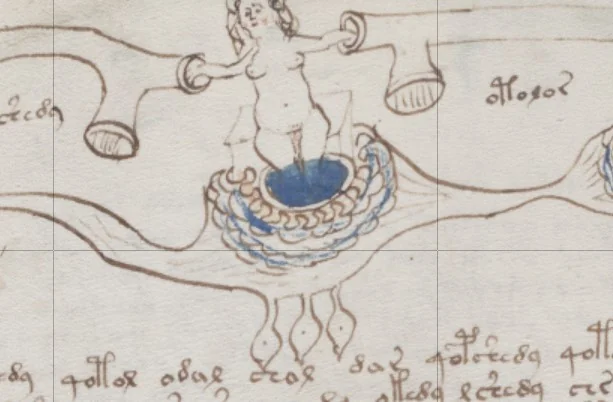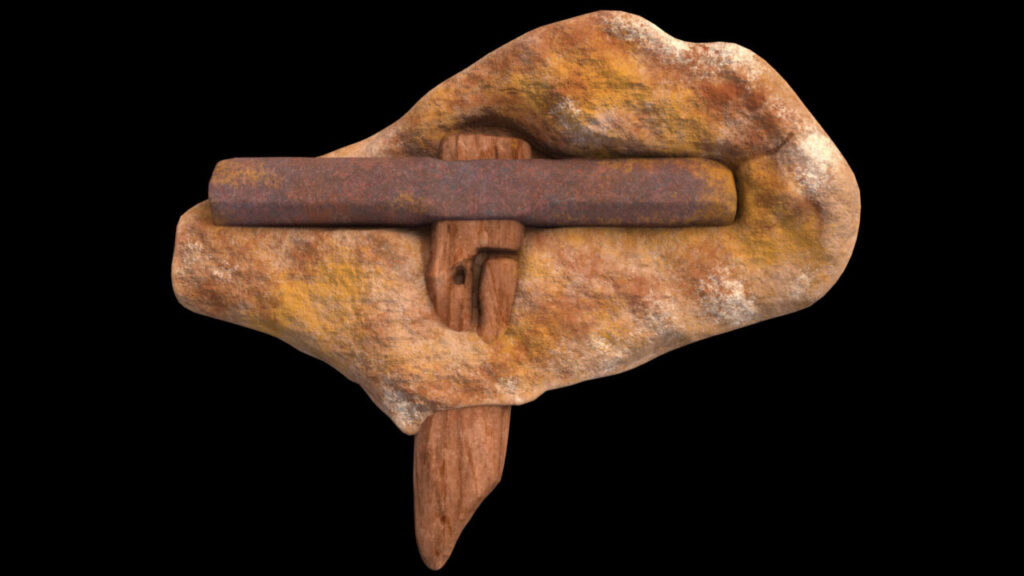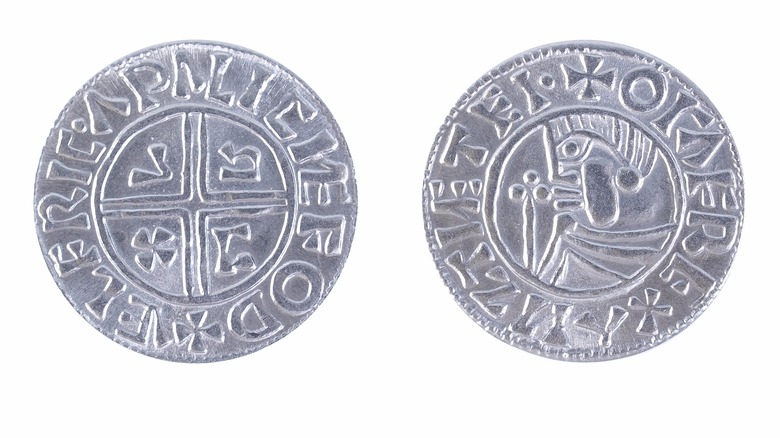
Have you ever heard about so-called out-of-place artifacts? If not you’re in for a treat.
Well, actually you’re in for a treat either way because the objects discussed in this article are something really special.
But what are they?
Out-of-place artifacts, also known as OOParts, are objects that seem to have been made or used in a time period or place where they should not have existed.
Simply they are amazing objects that seem out of this world sometimes.
And so, join us in this article, as we will explore the top 10 most intriguing out-of-place artifacts from around the world.
Interesting fact: The term "out-of-place artifact" was coined by Ivan T. Sanderson, a biologist and paranormal researcher, in the 1960s.
Top 10 Out-Of-Place Artifacts – Summary Table
| Artifact | Description | Discovery/Location | Possible Age |
| The Antikythera Mechanism | An ancient Greek device considered the world’s first computer. Tracks positions of the sun, moon, and planets. | Discovered in the Antikythera shipwreck, 1901 | Created around 150-100 BCE |
| The Baghdad Battery | A clay jar, copper cylinder, and iron rod believed to be 2,000 years old. Possible uses include electroplating or medical purposes. | Discovered near Baghdad, Iraq | Around 2,000 years old |
| The Voynich Manuscript | A book written in an undeciphered script and language with illustrations of unknown plants and astronomical diagrams. | Acquired by Wilfrid Voynich in 1912 | Early 15th century |
| The Piri Reis Map | A world map created in 1513 by Ottoman-Turkish admiral Piri Reis, noted for its accuracy and depiction of Antarctica. | Created by Piri Reis, 1513 | Created in 1513 |
| The London Hammer | A hammer made of iron and wood found in rock believed to be around 135 million years old. | Discovered in London, Texas, 1936 | Around 400 million years old (according to some theories) |
| The Saqqara Bird | A wooden artifact resembling a bird, believed to date back to around 200 BC. | Discovered in a tomb near Saqqara, Egypt, 1898 | Around 200 BCE |
| The Nazca Lines | A series of ancient geoglyphs in the Nazca Desert were created by removing surface pebbles to reveal lighter ground. | Nazca Desert, Southern Peru | Created between 500 BCE and 500 CE |
| The Dropa Stones | 716 circular stone discs with a central hole and spiral grooves, of unknown origin. | Discovered in the Bayan Har Mountains, China, 1938 | Age unknown, speculated to be thousands of years old |
| The Crystal Skulls | Human skull sculptures made of quartz, intricately carved with fine details. | Various locations in Central America | Believed to be ancient, exact age unknown |
| The Maine Penny | A small silver coin believed to date back to the 11th century, possibly brought to America by Norse explorers. | Found in Maine, United States, 1957 | 11th century |
The Antikythera Mechanism

An Ancient Greek Computer
The Antikythera Mechanism is an ancient Greek device that was discovered in the Antikythera shipwreck in 1901. It is considered to be the oldest known example of a complex geared mechanism, and it has been dubbed the “world’s first computer.”
The device was created around 150-100 BCE and was used to track the positions of the sun, moon, and planets.
Interesting fact: The Antikythera Mechanism was so advanced that it wasn't until the 14th century that similar mechanisms began to be developed in Europe.
The Antikythera Mechanism was discovered by a group of sponge divers who were exploring the Antikythera shipwreck. The device was initially thought to be a simple navigational instrument, but it was later discovered to be much more complex.
The mechanism was made up of at least 30 bronze gears and was capable of predicting solar and lunar eclipses, as well as the positions of the sun, moon, and planets.
The Baghdad Battery

The Baghdad Battery is a Parthian period relic that was discovered in the village of Khuyut Rabbou’a, near Baghdad, Iraq.
The artifact consists of a clay jar, copper cylinder, and iron rod. The jar is believed to have held an acidic substance, while the copper cylinder and iron rod may have served as electrodes.
Possible Uses
Some experts believe that the Baghdad Battery may have been used for electroplating, while others speculate that it may have been used for medical purposes.
However, there is no concrete evidence to support either theory.
Interesting fact: The Baghdad Battery is believed to be around 2,000 years old.
The Voynich Manuscript

An Undeciphered Mystery & Its Potential Uses
The Voynich Manuscript is a book written in an unknown script and an unknown language. It is named after Wilfrid Voynich, a Polish book dealer who purchased it in 1912.
The manuscript has been carbon-dated to the early 15th century, and it is believed to have originated in Europe.
Throughout history there have been numerous speculations about the manuscript’s use, including:
- Herbal Guide or Pharmacopoeia: Many pages feature detailed drawings of plants, some of which are fantastical, suggesting it could be an herbal guide or pharmacopoeia. The text might describe the plants’ medicinal properties, how to grow them, or their uses in various treatments.
- Alchemical Work: The manuscript includes many illustrations that resemble alchemical symbols and processes. Some speculate that it could be an alchemical work, detailing secret recipes and procedures for creating various substances or achieving mystical transformations.
- Astrological Manual: Several sections contain astrological diagrams and zodiac symbols, hinting at the possibility that it served as an astrological manual. It might have been used for making horoscopes or determining the best times for planting crops, medical treatments, or other activities based on astrological events.
- Coded Message or Cipher: Given the undeciphered text, a popular theory is that the manuscript is written in a complex cipher or code. Some believe it contains secret knowledge, possibly of a scientific, medical, or philosophical nature, hidden from common understanding.
- Medieval Medical Text: The manuscript might be a comprehensive medical text, combining herbal remedies, astrological medicine, and alchemical treatments. Medieval medicine often integrated various fields, and the manuscript’s diverse content could reflect this holistic approach.
- Created as a Hoax: Another theory is that the manuscript was created as an elaborate hoax to either deceive or entertain its audience. It could have been designed to appear mysterious and valuable, possibly to sell for a high price or as a scholarly prank.
- Artistic or Linguistic Experiment: Some suggest that the manuscript is an artistic or linguistic experiment, created to explore the boundaries of language and art. The unknown script could be an invented language, and the illustrations could be a whimsical artistic endeavor.
- Religious or Mystical Text: It might be a religious or mystical text, containing esoteric knowledge meant for initiates or a particular sect. The cryptic nature of the text and images could be intentional, meant to conceal sacred or mystical information from the uninitiated.
What was its real purpose? Who knows…
Most likely we will never know.
Interesting fact: The book contains illustrations of plants that do not match any known species, as well as diagrams of astronomical and astrological phenomena.
The Piri Reis Map

The Piri Reis Map is a world map created in 1513 by Ottoman-Turkish admiral and cartographer Piri Reis. The map is considered mysterious due to its accuracy, level of detail, and the inclusion of land masses that were not officially discovered until centuries later.
The map is also notable for its depiction of Antarctica, which was not officially discovered until 1820.
Interesting fact: The Piri Reis Map is believed to be based on even older maps, some of which may have been created by the ancient Greeks.
Accuracy?
The accuracy of the Piri Reis Map has led to speculation about how ancient civilizations may have possessed advanced knowledge of geography and cartography.
Some have even suggested that the map is evidence of extraterrestrial contact or lost civilizations with advanced technology.
The London Hammer

A Tool Out of Time
The London Hammer is a name given to a hammer made of iron and wood that was found in London, Texas, in 1936.
The hammer (or the rock formation in which the hammer was embedded) is believed to be 100 – 400 million years old, which is impossible according to mainstream science.
The hammer has a modern design and appears to be a tool that was used by humans. It has a wooden handle and an iron head, which is still intact.
Controversies and Theories
The London Hammer has been the subject of many controversies and theories.
Some people believe that the hammer is evidence of time travel or ancient civilizations that were more advanced than we previously thought.
Others believe that the hammer is a hoax or a natural formation that only appears to be a tool.
The Saqqara Bird

The Saqqara Bird is a wooden artifact discovered in 1898 in a tomb near the ancient Egyptian city of Saqqara.
It is believed to be a model of a bird and has been dated back to around 200 BC. The artifact is made of sycamore wood and measures 18.1 cm in length.
The Saqqara Bird has been the subject of much debate and speculation. Some believe that it is evidence of ancient flight, while others think that it was merely a child’s toy.
However, there is no evidence to suggest that the Saqqara Bird was ever used for flight.
Another theory is that the Saqqara Bird was used in religious ceremonies. It has been suggested that the artifact was used to represent the soul of the deceased, which was believed to be able to fly to the afterlife.
Interesting fact: The Saqqara Bird was discovered in the tomb of Pa-di-Imen, a high-ranking official in ancient Egypt.
The Nazca Lines

The Nazca Lines are a series of ancient geoglyphs located in the Nazca Desert of southern Peru. These complex designs and shapes were created by removing the reddish-brown iron oxide-coated pebbles that cover the surface of the Nazca desert and revealing the light-colored earth underneath.
The Nazca Lines were created between 500 BCE and 500 CE and were rediscovered in 1927 by a Peruvian archaeologist.
Interesting fact: The Nazca Lines include over 800 straight lines, 300 geometric shapes, and 70 animal and plant designs.
Interpretations and Theories
The purpose of the Nazca Lines is still a mystery, and there are many interpretations and theories about their meaning.
Some believe that the lines were used for astronomical purposes, while others think that they were created for religious or ceremonial reasons.
Some researchers even suggest that the Nazca Lines were a way for the Nazca people to communicate with extraterrestrial beings.
Interesting fact: The Nazca Lines can only be fully appreciated from the air, leading some to speculate that the Nazca people had the ability to fly.
The Dropa Stones

The Dropa Stones are a set of 716 circular stone discs discovered in 1938 in a cave in the Bayan Har Mountains of China.
The discs are around 1 foot in diameter and have a hole in the center. Each disc is inscribed with a spiral groove that spirals from the center to the edge of the disc.
The grooves are said to be very precise and uniform, and they are said to be of an unknown origin.
Interesting fact: Some believe that the discs were used as a form of ancient language, with the grooves representing words and symbols.
The Crystal Skulls

The Crystal Skulls are a set of human skull sculptures made of clear or milky quartz. These skulls are believed to have been created by the ancient Mesoamerican civilization, but their origin and purpose remain a mystery.
The skulls are intricately carved with fine details, and they range in size from a few inches to life-size.
Interesting fact: Some people believe that the Crystal Skulls possess supernatural powers and can heal illnesses, communicate with spirits, and even predict the future.
Authenticity and Origin
There is much debate surrounding the authenticity of the Crystal Skulls. Some experts believe that they are ancient artifacts, while others argue that they are modern hoaxes.
The skulls have been subjected to extensive scientific testing, including radiocarbon dating and microscopic analysis, but the results have been inconclusive.
The Maine Penny

A Norse Artifact in North America?
The Maine Penny is a small silver coin that was found in Maine, United States in 1957. The coin is believed to date back to the 11th century and is considered to be an out-of-place artifact because it was found in America, far away from where it was originally minted.
The origin of the coin is still a mystery, but some experts believe that it may have been brought to America by Norse explorers.
The coin has similar markings to coins that were used in Norway during the 11th century, which has led some to believe that it may have been brought to America by Norse traders or explorers.
The Maine Penny is significant because it provides evidence of early European contact with America.
If it is indeed a Norse artifact, it would suggest that Norse explorers were able to travel to America long before Christopher Columbus arrived in 1492.




























